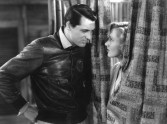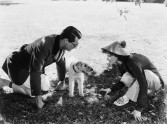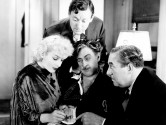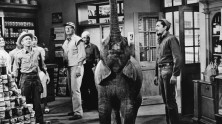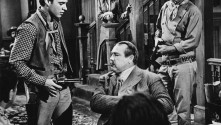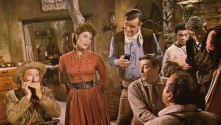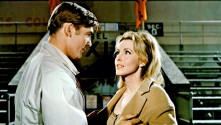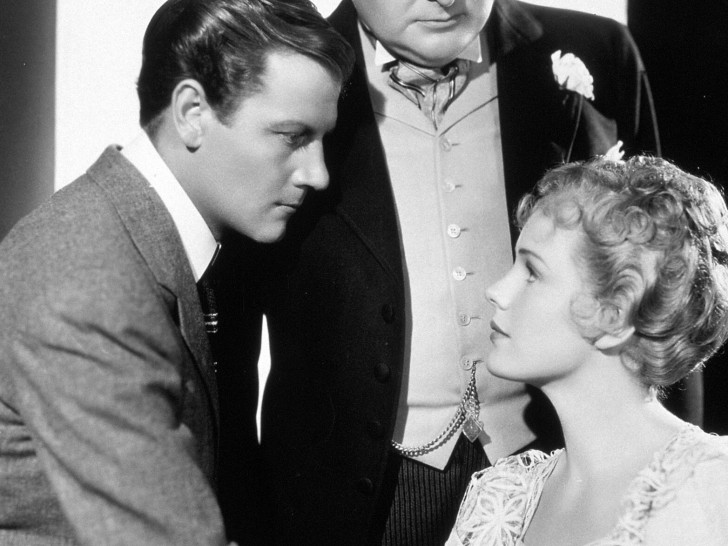
For his second outing under the employ of notoriously hands-on producer Samuel Goldwyn, Hawks tackled Come and Get It, Edna Ferber’s panoramic survey of the turn-of-the-century logging business in the American Midwest. Evidently finding the novel’s multi-generation timeline and rise-and-fall structure too sprawling for his taste, Hawks cleaved the source text neatly into two halves: one, set in 1884, focusing on the halcyon days of Chicagoan entrepreneur Barney Glasgow (Edward Arnold), and one, which jumps ahead to 1907, dedicated to his curdling old-age success and infatuation with the daughter of his long-lost beloved (both embodied by Frances Farmer in a spectacular starring debut). This trimming, which sacrificed much of Ferber’s measured middle section, so perturbed Goldwyn that the director was replaced in the final days of shooting by William Wyler, but the late-stage rehire did little to dampen Hawks’ indelible mark on the material. A lengthy sequence at a pub predates To Have and Have Not in juggling simultaneous strands of witty romantic banter, bawdy comedy and musical performance, and contextualizing glimpses of the Wisconsin logging process—shot documentary-style by frequent collaborator Richard Rosson—lend the kind of realist texture that Hawks famously used to ground his stories.
Part of film series
Screenings from this program
Gentlemen Prefer Blondes

His Girl Friday

The Big Sleep (pre-release version)

A Girl in Every Port

The Cradle Snatchers / Paid to Love

Fazil

Fig Leaves

Man's Favorite Sport?

The Crowd Roars

Today We Live


